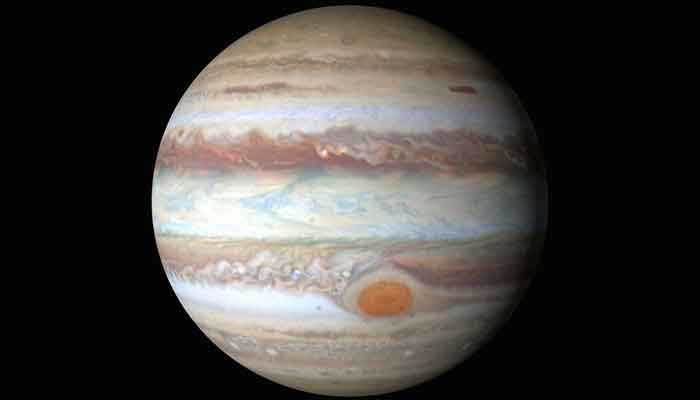New study discloses Jupiter used to be twice as big as it is now
Planet is said to have magnetic field at least 50 times stronger than what it has today, says study
May 22, 2025

Jupiter was significantly larger and had a lot stronger magnetic field long before it developed into the massive planet it is today, according to a recent study that looked back in time to show what the planet looked like in its early years.
According to new calculations, Jupiter was twice as large as it is now and had a magnetic field at least 50 times stronger than what it has today just 3.8 million years after the solar system's first solid objects formed. These findings were reported in a paper published Tuesday, May 20, in the journal Nature Astronomy, reported Space.com.
"Our ultimate goal is to understand where we come from, and pinning down the early phases of planet formation is essential to solving the puzzle," Konstantin Batygin, a professor of planetary science at the California Institute of Technology, who led the new study, said in a statement. "This brings us closer to understanding how not only Jupiter but the entire solar system took shape."
Batygin and his team mostly avoided the presumptions of current planetary formation models, such as the rate at which young planets gathered primordial gas, in order to expose Jupiter's earliest planetary circumstances. Rather, they concentrated on Amalthea and Thebe, two of Jupiter's lesser-known moons.
Scientists believe that the slightly slanted orbits of these tiny satellites, which circle quite near Jupiter, have not changed since the early days of the solar system. The latest study claims that the researchers were able to reverse-engineer Jupiter's initial size and magnetic strength by examining such minute orbital tilts.
According to the team's estimations, youthful Jupiter had a volume that could have contained more than 2,000 Earths and a radius that was almost twice as large as it is now. The planet's current volume is sufficient to accommodate 1,321 Earths.
The study highlights that Jupiter's birth and early growth played a "pivotal role" in forming the general architecture of the solar system, even though it doesn't specifically examine how such a huge Jupiter would have affected the early solar system.









